
In this video clip from "Who's Tracking Your Face?", students will explore the civil liberties issue of facial tracking.
- Provider:
- PBS
- Date Added:
- 03/27/2018

In this video clip from "Who's Tracking Your Face?", students will explore the civil liberties issue of facial tracking.

Students will explore how gerrymandering affects the outcome of American elections.

Students will explore the fact that although America's student population is more racially diverse, American schools are becoming more racially segregated.
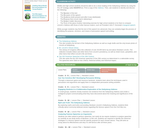
In this activity, students will complete a close reading of the Gettysburg address by using the strategy called SOAPSTONE.
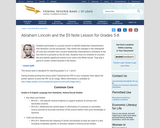
In this lesson, students participate in a puzzle activity to identify leadership characteristics that Abraham Lincoln possessed. They review the changes in the $5 note and consider how Lincoln's leadership characteristics contribute to the fact that he is pictured on the $5 note. Students look at a timeline of Lincoln's life and identify significant events in his road to the White House. They will then play a game to review content learned in the lesson.

This lesson traces Lincoln’s political life during a time of constitutional crisis. It examines Lincoln’s ideas and decisions regarding slavery and the use of presidential power to preserve the Federal Union during the Civil War. When students have completed this lesson, they should be able to analyze and evaluate President Lincoln’s decisions in response to the critical constitutional issues of his time.
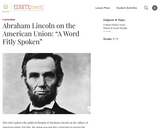
By examining Lincoln's three most famous speeches the Gettysburg Address and the First and Second Inaugural Addresses in addition to a little known fragment on the Constitution, union, and liberty, students trace what these documents say regarding the significance of union to the prospects for American self-government.
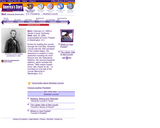
This article describes the humble beginnings of our 16th president, Abraham Lincoln. Photographs are included. His path to the presidency was marked by determination and perseverance. Lincoln did not let the problems in his life stop him from exemplifying good citizenship and helping others. Clicking through the links provides varied information about his life.

Students will participate in a concept formation lesson designed to teach them an understanding of the concept absolutism. In order to develop comprehension of the concept, students will uncover the critical attributes of absolutism from analsyis of a series of examples and non-examples. Students will learn about the absolute monarchies in power during the age of enlightenment and examine contemporary examples. In the process of identifying the concept, students will also understand the similiarities and differences of constitutional monarchies and totalitarianism.

In this lesson, students will participate in a concept formation lesson designed to teach them an understanding of the concept absolutism. In order to develop comprehension of the concept, students will uncover the critical attributes of absolutism from analsyis of a series of examples and non-examples. Students will learn about the absolute monarchies in power during the age of enlightenment and examine contemporary examples. In the process of identifying the concept, students will also understand the similiarities and differences of constitutional monarchies and totalitarianism.
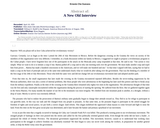
This page contains a transcript of part of an interview with Che Guevara at his home on April 18, 1959 by two Chinese journalists, K'ung Mai and Ping An.
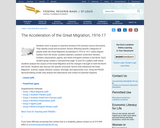
In this lesson, students work in groups to examine excerpts from primary source documents. They identify social and economic factors affecting specific categories of people when the Great Migration accelerated in 1916 to 1917: black migrant workers from the South, southern planters, southern small-farm farmers, northern industrialists, agents, and white immigrant workers in the North. Each student group creates a "perspectives page" to post for a gallery walk where students analyze the causes of the Great Migration and the changes it brought to both the North and South. Students also discuss the specific economic factors that influenced the Great Migration: scarcity, supply, demand, surplus, shortage, and opportunity cost. Using the PACED decisionmaking model, they analyze the alternatives and criteria of potential migrants.

Students focus on specific tasks that have changed because of technology. They compare the task of writing and mailing a letter to the task of sending an e-mail.

This article discusses acetylcholine and its association with Alzheimer's disease.
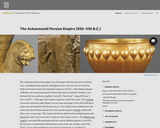
This article explains the development and legacy of the Achaemenid Persian Empire.
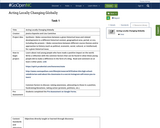
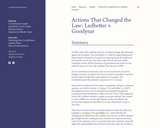
This extensive, 4-day lesson plan is based on a video that tells the law-changing story behind the Lilly Ledbetter Fair Pay Act of 2009. Students gain insight into the lawmaking process, consider how statutory decisions made by the Supreme Court can prompt better laws, and learn about the rights and responsibilities they will have when they enter the workforce.
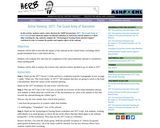
In this activity, students watch a short clip from the ASHP documentary 1877: The Grand Army of Starvationto learn about the impact of railroad expansion on Americans and the nation as a whole. After watching the clip, students complete the “Technological Turning Points and their Impact” worksheet in order to examine the positive and negative effects of the railroad.
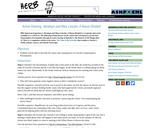
PBS American Experience’s Abraham and Mary Lincoln: A House Dividedis a 6 episode mini-series available as a 3 DVD set. The following activity focuses on the causes and consequences of Lincoln’s Emancipation Proclamation through an active viewing of Episode 4: The Dearest of All Things(Disc 2). There is a companion website to the series, The Time of the Lincolns, that contains a Teacher’s Guide, primary sources, and episode transcripts.
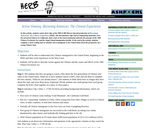
In this activity, students watch short clips of the PBS/A Bill Moyers Special production ofBecoming American: The Chinese Experience(2003). The documentary clips and accompanying materials cover the arrival of Chinese in California, their work on the transcontinental railroad, the passage of the 1882 Chinese Exclusion Act, and the Angel Island immigration facility. At the end of the activity, students complete a short writing task on whether not to immigrate to the United States from the perspective of a young Chinese man.